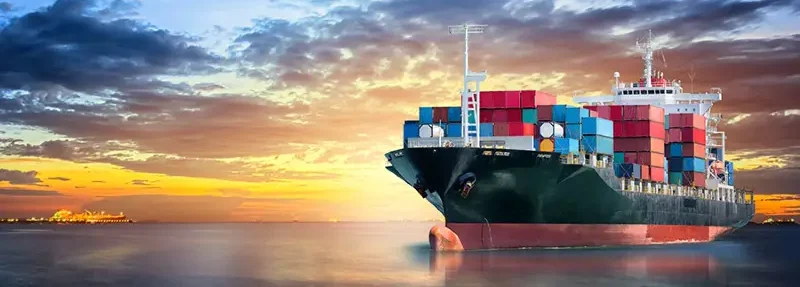Turning the corner? — Exporter Magazine
Exporters have had a patchy year, with more lows than high points, although there is hope 2011 will be better. By BoB Edlin
It was a patchy year for New Zealand exports at best although the country’s total export receipts in the year to September were a tad higher than a year earlier. This was the first time this year that 12-month receipts were up year-on-year. The data included a recovery in education export receipts (up nearly 7.5%) and the service sector generated annual export revenue of more than $2 billion to recover ground lost after it peaked at $2.4 billion around 2003-04.“There’s an indication that things are moving in the right direction,” said John Walley, chief executive of the Manufacturers and Exporters Association.His organisation’s latest survey (at time of publication) showed sales and employment were up, albeit from a “dire” comparable period of 2009. Some people were above 2008 sales levels. “It’s patchy but some people are doing pretty well,” Walley said. “Are we in a better position now than this time last year … probably. Will we be in a better position a year from now … hopefully,” he said.
THE HIGHS
Trade agreements:
Negotiations are under way for an expanded Trans-Pacific Strategic Economic Partnership Agreement (embracing Brunei Darussalam, Chile, New Zealand and Singapore) to include the US, Australia, Peru and Vietnam. Negotiations towards free trade agreements (FTAs) with Korea and India have been instigated. The New Zealand Hong Kong Closer Economic Partnership agreement was signed earlier in the year, complementing the FTA with China. Negotiations on the New Zealand–Gulf Cooperation Council FTA concluded on October 31 and negotiations on an FTA with Russia, Belarus and Kazakhstan will start early next year.An Export NZ survey found more than 70% of respondents enjoyed a modest to substantial increase in business efficiency from the removal of barriers to trade and investment in their export markets as a result of signing FTAs.
China: China has risen from being our fourth biggest export market to second biggest in the past five years. New Zealand’s exports have increased 30% in that time but exports to China have grown more than three-fold from $1.6 billion in 2005 to $4.5 billion in the 12 months to September 30.
WTO complaint procedures: The World Trade Organisation’s Panel found in favour of New Zealand apple growers in their dispute with Australia (although Australia has appealed the ruling). New Zealand apples have been barred from Australia for decades by restrictive quarantine measures.
Rules of origin changes: Changes to the Rules of Origin under the Australia New Zealand Closer Economic Relations Trade Agreement will help streamline the export process for several industries. The rules determine which products count as “Australian” or “New Zealand” goods to qualify to be exported between the two countries duty-free.
THE LOWS
Exchange rate: “This continues to be a real problem for people who are thinking about expanding capacity, said Walley. “I don’t know of any significant investment which is aimed at export capacity expansion outside the primary sector.”
Catherine Beard, executive director of Export NZ, more philosophical, said the currency tracked close to commodity prices, so it may or may not have been an issue, depending on what you were exporting. The US market was challenging, but plenty of her members had a natural hedge by importing components and adding some value before exporting. “The message we get from exporters is they would like less volatility,” Beard says.
Shipping: Some exporters have struggled to get their goods away due to a reduction in global shipping capacity. The international shipping industry, lumbered with surplus capacity because of the global recession, combined services and sidelined ships in a rationalisation strategy to get back into profit.
“We have had situations, especially out of Lyttelton, where containers of goods have been sitting on the wharf but been bumped, particularly if they were non-perishable and the customers were not big enough to pressure shipping lines,” says Beard.
Trade barriers: Countries increasingly are imposing non-tariff trade barriers (known as sanitary and phytosanitary barriers).
A recent trade barriers report commissioned by the Horticulture Export Authority and Horticulture New Zealand found tariffs imposed by other countries on New Zealand products cost growers $34,000 each last year, an increase of $6000 on 2008 figures.Horticulture exporters paid $235 million in tariffs to importing countries, an increase of 19% on the 2008 figure of $197m. At the same time, export earnings increased 8%.
China: The downside of the FTA is that New Zealand still doesn’t have access under the China Compulsory Certification component. “It’s an ongoing thorn in the side of a few people,” Walley said. “Two years after signing the Chinese FTA we still don’t have access into China for our elaborate products.”
R&D tax credits: The NZMEA called for the Government to restore the tax credit after the latest Innovation Index of New Zealand showed R&D investment had been flat between 2000 and 2007 and dropped in 2008. Many other countries offer significant tax benefits for R&D activity. Australia recently introduced a 45% tax credit.
Skills: The Government removed $55 million from apprenticeship training and reallocated it to fund university places. Skill shortages are likely to reappear, Walley warns.
An Export NZ road show asked members about the main barriers to doubling their exports. Getting qualified staff was among the key issues. “It’s partly about getting schools to be focused on what business needs and connecting the education system with employers,” says Beard.
The Doha Round: The target for wrapping up the World Trade Organisation’s Doha Round of negotiations was the end of 2010, but has slipped again. The 153-nation organisation now hopes for an outline agreement by mid-2011 and signatures on the overall deal at a ministerial meeting in December 2011. [END]





